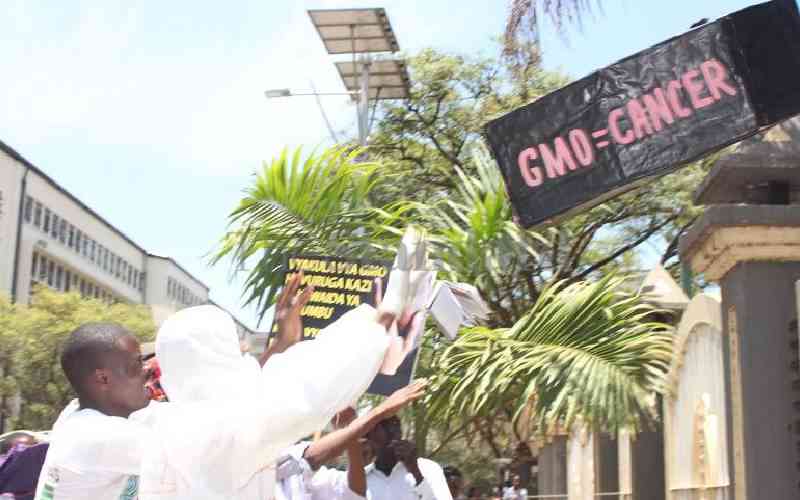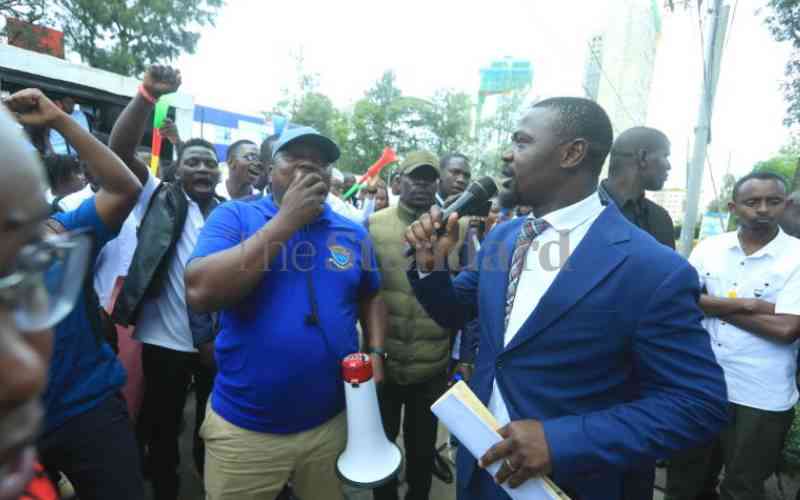By Stanley Ongwae
Loss of hair due to highly toxic treatment drugs and severe muscle wasting tell a story of Daisy Nyanchoka’s fiery battle with cancer, before she yielded to the disease two weeks ago at Homabay District hospital.
For more than five months, young Daisy was fighting a sweltering battle with a disease her parents knew little about.
According to doctors, her condition was discovered at a worse stage when it could resist basic treatment drugs. The medics say that the cancer cells had proved resistance over first line drugs that they had been treating her with.
“Owing to her awful weight loss as a result of malnourishment, we put her on diet first before we could start administering stronger drugs that could counter the notorious cancer cells,” Dr Meshach Liru, the pediatrician who attended to Daisy says.
Daisy’s mother, Rhoda Mosoti pitifully watched as her child of seven years was wasted away with what the doctors described as Burkkit’s Lymphoma cancer of the lymphatic system. She says before her demise, Daisy had to be fed through a drip, for over a month.
“At times it becomes hard for me to contain emotions, but I use to bow my head and say a silent prayer to God to spare her the suffering by taking her,” she confesses.
Symptoms
Daisy’s problem commenced when her abdomen started distending about six months ago. The first thing that crossed her mother’s mind at the onset of the swelling was constipation. At the time she was developing the signs she could not eat anything.
Her mother became more confused when she realised that the bulge refused to subside after medication. Instead it was growing worse each new day. Daisy also developed a fever and vomited a lot.
The puzzle became complicated when the seven-year-old girl developed diarrheoa, losing weight and wasting muscle drastically.
“This was about a week after the bloating had developed. I first thought the girl was having a lot of worms in the stomach. I tried to deworm her with over-the-counter prescription drugs but to no avail,” Rhoda says.
Diagnosis
Daisy was lastly diagnosed with Burkkit’s Lymphoma at Kisii Level Five Hospital six months later. But by that time it had surpassed basic treatment stages and grown worse. She had lost twice her weight and her body had deeply wasted away. Two weeks ago, Daisy gave in to be with her maker, after braving on for six months.
Her case is just one out of thousands cancer cases amongst children that are recorded daily in the country. Statistical research done three months ago shows that about 80 children have been diagnosed with cancer of the lymphatic system at Homabay District Hospital alone.
“This evidence show that there is need for an urgent intervention in finding out more about epidemiology of this type of cancer in this region,” says Dr Constance Tenge, team leader for the Cancer of the Lymphatic System Investigation and Treatment Center (CLSITC) project.
Common signs
Usually, it is characterised by massive swellings on the eye, jaws and the stomach, which may be accompanied by loosening of teeth or in some cases teeth falling out.
If not treated early, the cancer cells spread to organs like the liver, spleen and brain. “At that stage it is usually hard to manage it,” the doctor remarks.
During the interview at the health facility, there were about 20 admissions of Burkkit’s Cancer that were being attended to. Daisy Nyanchoka was amongst them.
Prevalence blamed on ignorance
According Dr Meshach Liru, a pediatrician at Homabay District hospital, almost all cases of the cancer that were reported in the facility either were first treated by unqualified people or were treated for different diseases.
“While some parents resolve to treat Burkkit Lymphoma traditionally, others confess taking their children in health centers that have no capacity to diagnose it and all this may be interpreted as ignorance,” says Dr Liru.
Dr Constance Tenge, a pediatrician leading a team of researchers working with Emblem (Epidemiology of Burkkit’s Lymphoma in East-African Children and Minors) says the cancer cells multiply at a very high rate that they can double up within 24 hours.
Endemic Burkkit Lymphoma is only found in Africa unlike similar types that are found in other parts of the globe. In Kenya, the disease has been mapped in areas where malaria prevalence is highest.
Pamela Were, an oncology nurse who is one of the members of the research team says records from provincial health facilities in New Nyanza and Rift Valley show that many of the referral cases in the facilities were from Migori, Kisii, Western Kenya and Homabay.
“Those are places that are regarded as malaria endemic zones,”observed Ms Were. So far, 76 children from Homabay area have been diagnosed with symptoms related to the disease but only 17 have tested positive and are currently being treated.
Already, the researchers with Emblem have started a community mobilisation campaign that is aimed at sensitising local communities on the disease and inviting those with suspected cases to take their children for treatment.
The mobilisation campaigns will be done in schools, churches and in community forums. The centre will serve regions of Gusii, Migori, and other neighbouring regions of Rift Valley, that are far away from major referral health facilities in Kisumu, Eldoret and Nairobi.
 The Standard Group Plc is a multi-media organization with investments in media platforms spanning newspaper print
operations, television, radio broadcasting, digital and online services. The Standard Group is recognized as a
leading multi-media house in Kenya with a key influence in matters of national and international interest.
The Standard Group Plc is a multi-media organization with investments in media platforms spanning newspaper print
operations, television, radio broadcasting, digital and online services. The Standard Group is recognized as a
leading multi-media house in Kenya with a key influence in matters of national and international interest.











